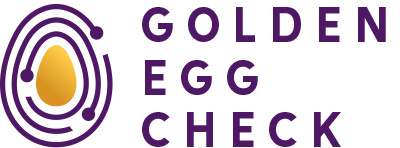Understanding the fundamentals of startup documentation
Proper documentation forms the backbone of any successful startup journey. Whether you’re seeking investment, applying for loans, or planning your company’s strategic direction, having the right documents can make or break your opportunities.
Different situations call for different types of documentation. Investor readiness depends heavily on your ability to present information in the format that best serves your audience’s needs. A busy venture capitalist reviewing dozens of opportunities weekly requires different information than a bank manager assessing loan applications.
The key is understanding when each document type serves you best. Pitch decks excel at creating initial interest and securing face-to-face meetings. Business plans demonstrate thorough planning and detailed thinking, making them valuable for formal processes and internal strategy development.
What exactly is a pitch deck?
A pitch deck is a visual presentation tool designed to tell your startup’s story quickly and compellingly. Think of it as your company’s highlight reel, condensed into 10-15 slides that can be consumed in under 10 minutes.
The format emphasises visual storytelling over detailed explanations. Each slide should communicate one key point clearly, using graphics, charts, and minimal text. This approach works because investors often review pitch decks without verbal explanation, making clarity paramount.
Pitch decks serve multiple purposes beyond investor meetings. You’ll use them for partnership discussions, customer presentations, and team alignment sessions. The visual format makes complex concepts accessible to diverse audiences, regardless of their technical background.
What is a business plan and how does it work?
A business plan is a comprehensive written document that outlines your company’s strategy, market analysis, operational plans, and financial projections in detail. Unlike pitch decks, business plans dive deep into the mechanics of how your business will operate and grow.
These documents typically span 20-40 pages and include sections on market research, competitive analysis, marketing strategies, operational procedures, management structure, and detailed financial forecasts. The written format allows for thorough explanation of assumptions and methodologies.
Business plans function as both external communication tools and internal roadmaps. They force you to think through every aspect of your business systematically, identifying potential challenges and opportunities before they arise. This strategic planning process often reveals insights that wouldn’t emerge from creating a pitch deck alone.
When should you use a pitch deck versus a business plan?
Use pitch decks for initial investor outreach, partnership meetings, and any situation where you need to quickly capture attention and generate interest. They’re perfect for elevator pitches, demo days, and first meetings with potential stakeholders.
Business plans work better for formal processes requiring detailed analysis. Banks typically require them for loan applications. Some investors request them during due diligence phases. They’re also valuable for internal planning sessions and board meetings where strategic decisions need thorough discussion.
Consider your audience’s time constraints and information needs. A venture capitalist screening opportunities wants a pitch deck first. The same investor, once interested, might request specific sections from your business plan. Many startups benefit from having both documents prepared and knowing when to use each.
How long should each document be?
Pitch decks should contain 10-15 slides maximum for initial presentations. This length forces you to focus on the most compelling aspects of your business whilst remaining digestible for busy audiences. Each slide should be readable and understandable within 30-60 seconds.
Business plans typically range from 20-40 pages, depending on your industry and complexity. Technology startups might need fewer pages, whilst manufacturing businesses require more detailed operational sections. The key is including enough detail to demonstrate thorough thinking without overwhelming readers.
Remember that quality trumps quantity in both cases. A concise, well-crafted 12-slide pitch deck outperforms a rambling 20-slide presentation. Similarly, a focused 25-page business plan with clear insights beats a 50-page document filled with unnecessary detail.
What information goes into each document?
Pitch decks should cover your problem statement, solution, market opportunity, business model, traction, team, competition, financials, and funding requirements. Each topic gets one slide, with supporting details saved for verbal presentation or follow-up questions.
Business plans expand significantly on these topics. Include detailed market research, comprehensive competitive analysis, operational procedures, marketing strategies, management biographies, risk assessments, and complete financial projections with assumptions clearly stated.
| Document Type | Key Sections | Level of Detail |
|---|---|---|
| Pitch Deck | Problem, Solution, Market, Team, Traction, Financials | High-level overview |
| Business Plan | Executive Summary, Market Analysis, Strategy, Operations, Financials | Comprehensive detail |
Avoid including highly technical details in pitch decks, but ensure your business plan addresses them thoroughly. Understanding what appeals to different investors helps you tailor your content depth to match your audience’s expertise and requirements.
Making the right choice for your startup journey
Both documents serve important but different roles in your startup journey. Pitch decks open doors and create opportunities for deeper conversations. Business plans demonstrate your ability to think strategically and plan comprehensively.
Start with a strong pitch deck to generate interest, then develop detailed business plan sections as needed. This approach lets you test market interest before investing time in comprehensive planning. Many startups iterate their pitch decks multiple times based on investor feedback.
Your choice between documents should align with your immediate goals and audience needs. Building investor readiness means having both tools available and knowing when each serves you best. At Golden Egg Check, we understand that proper documentation forms the foundation of successful fundraising, and we’re here to help you navigate these important decisions as you build your startup’s future.




